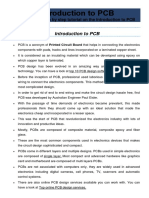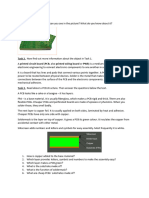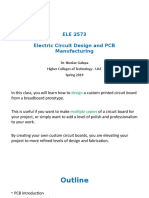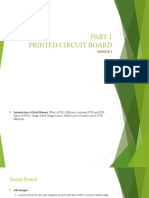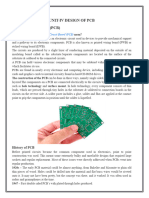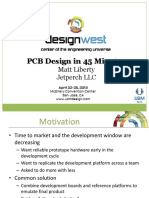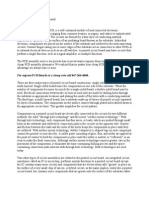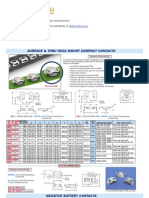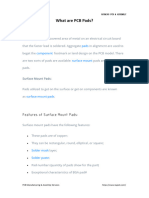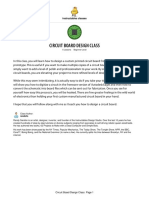0% found this document useful (0 votes)
127 views17 pagesPCB Basics: Available Online at
The document provides an overview of printed circuit boards (PCBs). It discusses what a PCB is, its composition which includes layers like the fiberglass substrate, copper traces, soldermask, and silkscreen. It also covers some common PCB terminology used in design and manufacturing like annular rings, drill hits, pads, plated through-holes, planes, and reflow soldering. The goal is to explain the basic concepts behind PCBs.
Uploaded by
DineshCopyright
© © All Rights Reserved
We take content rights seriously. If you suspect this is your content, claim it here.
Available Formats
Download as PDF, TXT or read online on Scribd
0% found this document useful (0 votes)
127 views17 pagesPCB Basics: Available Online at
The document provides an overview of printed circuit boards (PCBs). It discusses what a PCB is, its composition which includes layers like the fiberglass substrate, copper traces, soldermask, and silkscreen. It also covers some common PCB terminology used in design and manufacturing like annular rings, drill hits, pads, plated through-holes, planes, and reflow soldering. The goal is to explain the basic concepts behind PCBs.
Uploaded by
DineshCopyright
© © All Rights Reserved
We take content rights seriously. If you suspect this is your content, claim it here.
Available Formats
Download as PDF, TXT or read online on Scribd
/ 17









